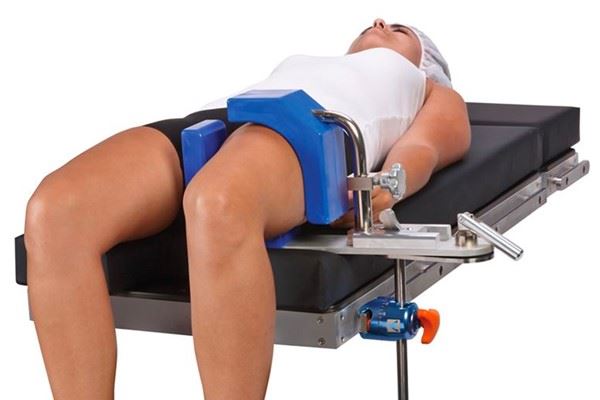-
Home
-
An Overview of Surgical Table Accessories
An Overview of Surgical Table Accessories
April 4, 2023

In any surgical procedure, maintaining patient safety is of the utmost importance. To achieve this, surgeons and other healthcare professionals must have access to the right selection of surgical table accessories to secure and stabilize the patient for the duration of the procedure.
In this article, we will discuss some of the different types of surgical table accessories that are needed in the operating room.
What are Surgical Table Accessories?
Surgical table accessories are devices which increase the functionality and usability of surgical tables. Some types of accessories include toboggans and liners, armboards, hand tables, leg holders, clamps, preppers, and anesthesia screens, each of which are designed to provide various benefits to both surgeons and patients during medical procedures.
How Do Surgical Table Accessories Improve Patient Safety?
Surgical table accessories help to improve patient safety by helping ensure the patient is secure, stable, and positioned properly in the operating room. Many of these can be adjusted to various angles and heights for optimal access to the surgical site. Some positioning devices also have infection control and pressure management properties to reduce the risk of injury or cross-contamination.
What are the Components of an Operating Table?
An operating table, also called a surgeon’s table or operating room table, is a specialized table designed to provide a safe and comfortable platform for surgical procedures. It typically consists of a flat surface, a headrest, and a set of adjustable height legs. Additionally, some operating tables have side rails to attach accessories like preppers, stirrups, anesthesia screens, instrument trays, and armboards.
The main types of operating tables include general surgical tables, orthopedic tables, and radiolucent imaging tables.
General surgical tables are utilized for a wide range of different surgical procedures, including plastic, cardiovascular, gynecological, hernia, gallbladder, and many other types of surgeries. These types of operating tables typically have a flat top, and can be adjusted for height and length, tilted laterally or horizontally, and feature two adjustable crossbars.
Orthopedic tables are designed for surgical procedures involving the bones and joints. Typically, they are lower to the ground than general surgical tables, and feature built-in traction systems for procedures requiring specific alignment and stabilization.
Radiolucent imaging tables are made for use with imaging equipment such as X-ray and fluoroscopy machines. Moreover, they feature a tabletop made of a radiolucent material such as carbon fiber, which allows X-rays and other forms of imaging to pass through the tabletop and capture clear images of the patient's body.
What is a Maquet Table?
Maquet is a brand of operating table used in a wide range of surgical procedures that are known for their versatility and adjustability. These tables can be adjusted to accommodate various positions, helping ensure patient safety during the procedure.
What Accessories are Needed for the Operating Room Table?
It is important for the safety of the patient that surgeons and other healthcare professionals have access to the right selection of surgical table accessories. There are a variety of devices specifically manufactured to help improve surgical outcomes, including:
Hand Tables and Armboards: For vascular procedures and surgeries involving the hand or arm, devices such as the Rycor Hand Table offer a stable surface, featuring a one-turn twist knob for simple height adjustment and fast setup. As different procedures require different patient positioning, the AliMed Pivoting Armboard is easy to use and adjust to the correct angle for each individual patient.
Leg Holders and Preppers: During surgical preparations, the AliMed Single-Leg Prepper provides optimal leg access, support, and comfort. For arthroscopic procedures, the AliMed Fluid-Proof Arthroscopic Leg Holder is specifically designed to reduce cross-contamination risk in the O.R., with fluid-proof, seamless pads that are easy to clean and add stability to the thigh area.
Tobbogans and Liners: Toboggans keep arms and legs on the table, help prevent interference with IV lines, and help protect the ulnar nerve against pressure. AliMed’s Low-Profile Tobbogan and Single-Use Liner Kit include disposable liners that offer enhanced pressure management for your patients and help reduce cross-contamination risks, supporting your infection control protocol while offering easy cleanup.
Sockets and Clamps: In order to attach many of these accessories to the operating table, sockets and clamps may need to be used. The AliMed® Original Clark Socket is the most durable clark socket on the market, and the KYRA® Secure Release Clamp mounts and locks in one quick movement to prevent surgical accessories from disengaging.
Maintaining the safety and stabilization of patients on an operating room table is paramount, and using the right types of surgical table accessories can help promote successful outcomes for any procedure.